Choosing the Right Camera
Embarking on your travel photography journey starts with selecting the right camera. In 2024‚ the options are vast‚ catering to every skill level and budget. For beginners‚ mirrorless cameras are an excellent choice‚ balancing image quality with user-friendliness. Consider models like the Sony α7C II or the OM SYSTEM OM-5‚ praised for their portability and advanced features. Don’t discount the capabilities of high-end compact cameras such as the popular Fuji X100V. Ultimately‚ the “best” camera depends on your individual needs and shooting style. Research‚ compare‚ and choose a camera that inspires you to capture the world’s beauty.
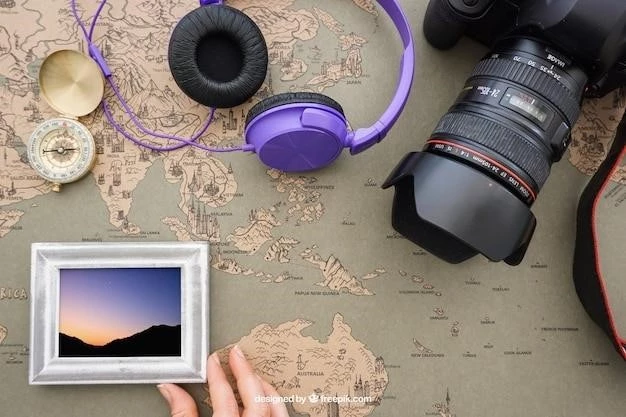
Mastering Basic Composition
Composing a captivating travel photograph extends beyond simply pointing and shooting. It involves thoughtfully arranging elements within the frame to guide the viewer’s eye and evoke a desired emotion. While composition can be subjective‚ understanding and applying fundamental rules can significantly elevate your photography. Let’s explore some key principles:
The Rule of Thirds:
Imagine dividing your frame into nine equal parts using two horizontal and two vertical lines; The rule of thirds suggests placing your subject or points of interest along these lines or at their intersections. This technique creates balance and visual interest‚ drawing the viewer’s gaze across the image.
Leading Lines:
Utilize natural or man-made lines to lead the viewer’s eye towards the main subject. Roads‚ rivers‚ fences‚ or architectural elements can all serve as powerful leading lines‚ adding depth and dimension to your photographs. Experiment with different angles and perspectives to maximize their impact.
Framing:
Enhance the context and visual appeal of your subject by using natural frames within your scene. Archways‚ doorways‚ foliage‚ or even a break in the clouds can frame your subject‚ directing attention and adding a sense of depth. Be creative and explore unique framing opportunities.
Symmetry and Patterns:
Look for opportunities to capture symmetrical scenes or repeating patterns‚ creating a sense of harmony and visual rhythm. Architectural marvels‚ reflections in water‚ or even rows of vibrant flowers can offer compelling symmetrical compositions. Experiment with breaking the symmetry strategically to introduce a touch of intrigue.
Negative Space:
Don’t underestimate the power of simplicity. Embrace negative space‚ the empty areas surrounding your subject‚ to create a sense of calm and focus. A minimalist composition with ample negative space can highlight your subject‚ allowing it to breathe and captivate the viewer’s attention.
Remember‚ mastering composition is an ongoing journey of exploration and experimentation. Don’t be afraid to break the rules‚ try different approaches‚ and develop your own unique style. By understanding and applying these fundamental principles‚ you’ll be well on your way to capturing visually stunning and evocative travel photographs.
Understanding Lighting Conditions
Light is the very essence of photography‚ and understanding its nuances is crucial for capturing breathtaking travel images. The way light interacts with your subject‚ its intensity‚ direction‚ and color temperature dramatically impact the mood‚ depth‚ and overall aesthetic of your photographs.
The Golden Hours:
Often dubbed the “magic hours‚” the golden hours refer to the period shortly after sunrise and before sunset. During these times‚ the sun casts a warm‚ diffused glow‚ creating long‚ soft shadows that add depth and dimension to landscapes and architectural marvels. Embrace the golden hours to infuse your travel photographs with a magical‚ ethereal quality.
Harsh Midday Light:
While the midday sun bathes the world in bright light‚ its harsh‚ direct rays can result in unflattering shadows and blown-out highlights. If shooting during midday is unavoidable‚ seek out shaded areas or use a diffuser to soften the light. Alternatively‚ embrace the high contrast to create dramatic silhouettes or abstract compositions.
Overcast Skies:
Don’t shy away from overcast days! The soft‚ diffused light provided by cloudy skies acts as a natural softbox‚ producing even illumination and flattering portraits. Embrace this type of light for capturing vibrant cityscapes‚ lush landscapes‚ or intimate portraits without harsh shadows.
Blue Hour and Night Photography:
As the sun dips below the horizon‚ the sky transforms into a canvas of deep blues and purples during the blue hour. This magical time offers unique opportunities to capture cityscapes adorned with twinkling lights or serene landscapes with a touch of mystery. Experiment with long exposures and a tripod to capture the magic of the night.
White Balance:
Different lighting conditions possess varying color temperatures‚ which can affect the overall warmth or coolness of your images. Adjusting your camera’s white balance setting ensures accurate color reproduction. Experiment with different white balance presets or manually adjust it to achieve the desired mood and aesthetic.
By understanding how to work with different lighting conditions‚ you can transform your travel photographs from ordinary snapshots into captivating visual narratives. Embrace the interplay of light and shadow‚ experiment with various times of day‚ and unlock a world of creative possibilities.
Capturing the Essence of Place
Travel photography transcends mere documentation; it’s about encapsulating the soul of a destination and conveying its unique atmosphere‚ culture‚ and stories. It’s about capturing the essence of a place that resonates with viewers long after they’ve seen the image. Here’s how to infuse your travel photography with a sense of place:
Look Beyond the Iconic Landmarks:
While iconic landmarks hold a certain allure‚ venture beyond the tourist trail to uncover the hidden gems and authentic moments that truly define a destination. Explore local markets bustling with life‚ capture the quiet charm of cobblestone streets‚ or document the daily rituals of its inhabitants. It’s in these unscripted moments that the true essence of a place often reveals itself.
Embrace Cultural Sensitivity:
When photographing people‚ especially in culturally diverse destinations‚ always be respectful and seek permission before raising your camera. A smile and a gesture of understanding can go a long way. Remember‚ you are a visitor capturing a glimpse into someone else’s life and culture.
Focus on Details:
Often‚ it’s the seemingly insignificant details that paint the most vivid picture of a place. Capture the intricate patterns of a handwoven rug‚ the weathered texture of ancient walls‚ or the vibrant colors of spices overflowing in a local market. These details add texture‚ depth‚ and authenticity to your travel narratives.
Tell a Story:
Every photograph has a story to tell. Instead of simply capturing a scene‚ think about the narrative you want to convey. What emotions do you want to evoke? What details will transport your viewers to that specific time and place? Compose your shots with intention‚ using elements like leading lines‚ framing‚ and perspective to guide the viewer’s eye and enhance the story.
Embrace Spontaneity:
While planning your shots is essential‚ don’t be afraid to embrace spontaneity. Allow yourself to wander‚ observe‚ and capture those unexpected moments that unfold before your eyes. Serendipity often leads to the most compelling and memorable photographs.
By venturing beyond the obvious‚ embracing cultural sensitivity‚ and focusing on the details that breathe life into a destination‚ you can elevate your travel photography from mere snapshots to evocative representations of the places you visit.
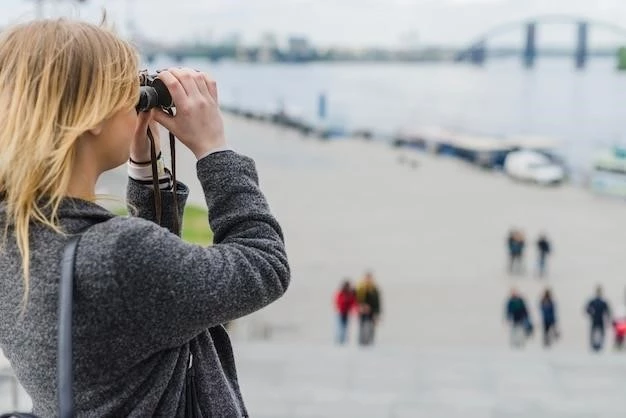
Experimenting with Different Perspectives
Perspective is a powerful tool in photography‚ allowing you to shape the viewer’s perception of a scene and evoke a range of emotions. Moving beyond the conventional eye-level viewpoint can dramatically transform your travel photographs‚ adding dynamism‚ intrigue‚ and a unique artistic flair. Let’s explore some compelling perspectives to experiment with:
Bird’s-Eye View:
Elevate your perspective‚ literally‚ by seeking out vantage points that offer a bird’s-eye view. Climb to the top of a building‚ hike to a scenic overlook‚ or even use a drone to capture sweeping vistas and reveal the grandeur of landscapes‚ cityscapes‚ or architectural marvels. This perspective often reveals hidden patterns and relationships between elements that might go unnoticed from ground level.
Worm’s-Eye View:
Get low‚ embrace the ground‚ and capture the world from a worm’s-eye view. This perspective emphasizes foreground elements‚ creating a sense of depth and towering grandeur. Look for leading lines‚ textures‚ and unique angles to add interest and dynamism to your compositions.
Forced Perspective:
Play with scale and perception by creating illusions of depth and size using forced perspective. By carefully positioning your subject in relation to distant objects‚ you can make them appear larger‚ smaller‚ or closer than they actually are. This playful technique adds a touch of whimsy and creativity to your travel photography.
Reflections:
Reflections offer a captivating way to introduce symmetry‚ abstract elements‚ and unique perspectives to your travel photographs. Look for reflective surfaces like calm water‚ windows‚ mirrors‚ or even puddles after rain. Experiment with different angles and compositions to capture intriguing reflections that add depth and visual interest.
Through Objects:
Frame your subject through natural or man-made objects to create a sense of depth and draw the viewer’s eye towards the focal point. Use archways‚ doorways‚ foliage‚ or even crowds of people to frame your subject‚ adding layers of interest and context to your travel narratives.
Remember‚ experimenting with perspective is an ongoing journey of discovery. Challenge yourself to see the world from different angles‚ break free from conventional viewpoints‚ and embrace the creative possibilities that unfold. By mastering the art of perspective‚ you can transform ordinary travel scenes into extraordinary visual experiences.
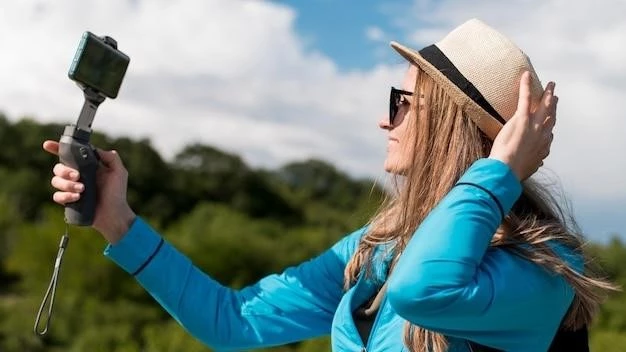
Editing Your Travel Photos
Editing is an integral part of the photographic process‚ allowing you to enhance your travel images and bring your creative vision to life. It’s about fine-tuning the elements of your photographs—adjusting light‚ color‚ contrast‚ and composition—to create images that are both visually stunning and true to your experiences. However‚ the goal is not to manipulate reality but to refine and elevate the essence of your captures. Here’s a guide to navigate the world of photo editing:
Choosing the Right Software:
From professional-grade applications like Adobe Lightroom and Capture One to user-friendly mobile apps like Snapseed and VSCO‚ a plethora of editing tools cater to every skill level and budget. Explore various options and select the software that aligns best with your workflow and editing style.
Start with Basic Adjustments:
Begin by fine-tuning the essential elements of your image. Adjust the exposure to brighten or darken the overall image‚ ensuring details are visible in both highlights and shadows. Tweak the contrast to enhance the separation between light and dark areas‚ adding depth and dimension. Experiment with white balance settings to achieve accurate color representation or to evoke a specific mood.
Enhance Colors and Tones:
Subtle adjustments to color saturation and vibrancy can breathe life into your travel photographs. However‚ strive for a natural look‚ avoiding oversaturation that can make images appear artificial. Explore the tone curve tool for more advanced control over the brightness and contrast of specific tonal ranges.
Crop and Straighten:
Cropping allows you to refine the composition of your images‚ removing distractions from the edges and guiding the viewer’s eye towards the main subject. Ensure the horizon is straight to create a sense of balance and harmony‚ particularly in landscape and architectural photographs.
Develop Your Personal Style:
As you become more comfortable with editing software‚ experiment with different techniques and presets to develop your unique editing style. Embrace the creative process‚ but always prioritize authenticity and strive for edits that enhance‚ rather than overshadow‚ the essence of your travel experiences.
Remember‚ editing is a subjective art form. There are no strict rules‚ only guidelines and personal preferences. The key is to approach it with a discerning eye‚ aiming for enhancements that elevate your images while preserving their authenticity and the spirit of your travel adventures.
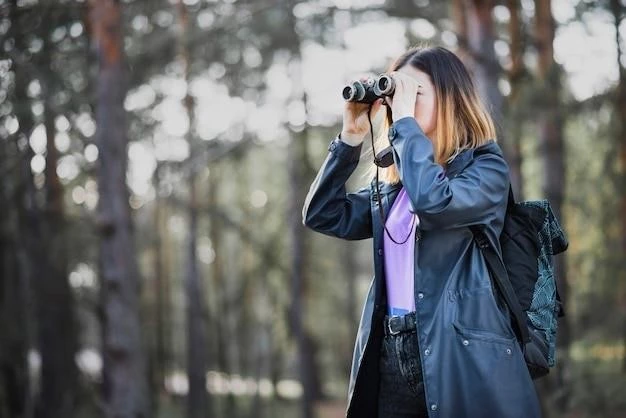
Sharing Your Travel Stories
Sharing your travel photographs is an integral part of the photographic journey‚ allowing you to connect with others‚ inspire wanderlust‚ and preserve your travel memories. In today’s digitally driven world‚ a myriad of platforms and avenues exist for sharing your visual narratives with the world. Here’s a guide to navigating the realm of sharing your travel stories effectively:
Curate Your Collection:
Before hitting the “share” button‚ take the time to carefully curate your collection of travel photos. Select images that not only showcase stunning visuals but also convey the essence of your experiences and evoke emotions in the viewer. Aim for a cohesive narrative that tells a story‚ rather than simply presenting a random assortment of images.
Optimize for Different Platforms:
Each social media platform possesses its own unique audience and visual language. Tailor your approach accordingly‚ optimizing image sizes‚ aspect ratios‚ and captions to best suit each platform. For instance‚ Instagram thrives on visually striking imagery‚ while Twitter often favors narratives accompanied by compelling visuals.
Craft Engaging Captions:
Captions provide context and breathe life into your travel photographs. Go beyond simply stating the location; share anecdotes‚ insights‚ or even humorous observations that enhance the viewer’s understanding and connection with your images. Use relevant hashtags to increase discoverability and engage with a wider audience.
Engage with the Community:
Social media is a two-way street. Actively engage with your followers‚ respond to comments‚ and participate in relevant travel photography communities. Sharing your knowledge‚ insights‚ and experiences fosters connections and enriches the online photographic community.
Consider Print and Other Avenues:
While digital platforms dominate the landscape of photo sharing‚ don’t underestimate the timeless appeal of printed photographs. Create physical albums‚ design personalized postcards‚ or even showcase your best work in local exhibitions. These tangible forms of sharing add a personal touch and allow you to cherish your travel memories in a different way.
Sharing your travel stories through photography is a rewarding experience that allows you to connect with others‚ inspire wanderlust‚ and preserve your travel memories. By curating your collections thoughtfully‚ optimizing for different platforms‚ and engaging with the online community‚ you can effectively share your unique perspectives and inspire others to embark on their own photographic journeys.
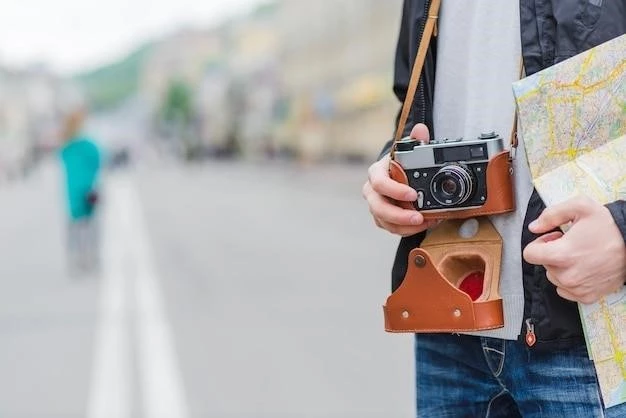
Essential Travel Photography Gear
Packing the right gear can significantly enhance your travel photography experience‚ allowing you to capture those special moments with clarity‚ creativity‚ and ease. While the specific equipment may vary depending on your shooting style and destination‚ certain essentials remain universally beneficial for travel photographers of all levels. Here’s a breakdown of essential gear to consider:
Camera Body and Lenses:
Your camera is your trusted companion on any photographic adventure. For beginners‚ mirrorless cameras offer an excellent balance of image quality‚ portability‚ and user-friendliness. Models like the Sony α7C II or the OM SYSTEM OM-5‚ mentioned earlier‚ are praised for their travel-friendly features. When it comes to lenses‚ a versatile zoom lens‚ such as an 18-135mm or 24-105mm‚ can cover a wide range of focal lengths‚ from expansive landscapes to intimate portraits. Consider adding a prime lens‚ known for their superior sharpness and low-light performance‚ for specific scenarios like night photography or capturing shallow depth of field.
Tripod for Stability:
A tripod is an indispensable tool for travel photographers‚ providing stability and enabling sharp images in low-light conditions or when using slow shutter speeds. Look for a lightweight‚ compact‚ and sturdy tripod that can be easily packed and transported. Travel tripods often feature foldable designs and adjustable legs for added versatility.
Filters for Enhanced Creativity:
Filters are like sunglasses for your lens‚ offering creative control over light and color. A polarizing filter is essential for reducing glare and reflections‚ enhancing colors‚ and deepening blue skies. Neutral density (ND) filters limit the amount of light entering the lens‚ allowing for slower shutter speeds and creative effects like blurring water or capturing motion blur in daylight.
Memory Cards and Batteries:
Don’t let a shortage of storage or power hinder your photographic adventures. Invest in high-quality memory cards with ample storage capacity to accommodate your shooting needs. Carry spare batteries‚ especially when traveling to remote locations or embarking on long photography excursions.
Camera Bag and Accessories:
A comfortable and functional camera bag is crucial for protecting your gear and keeping it organized on the go. Look for a bag that fits your camera body‚ lenses‚ and accessories comfortably while providing easy access and weather resistance. Additional accessories worth considering include a remote shutter release‚ lens cleaning kit‚ and external hard drive for backing up your precious images.
Remember‚ the best gear is the gear you have with you. Prioritize essentials that align with your shooting style and budget‚ and don’t be afraid to experiment and adapt your kit as your travel photography journey evolves.










